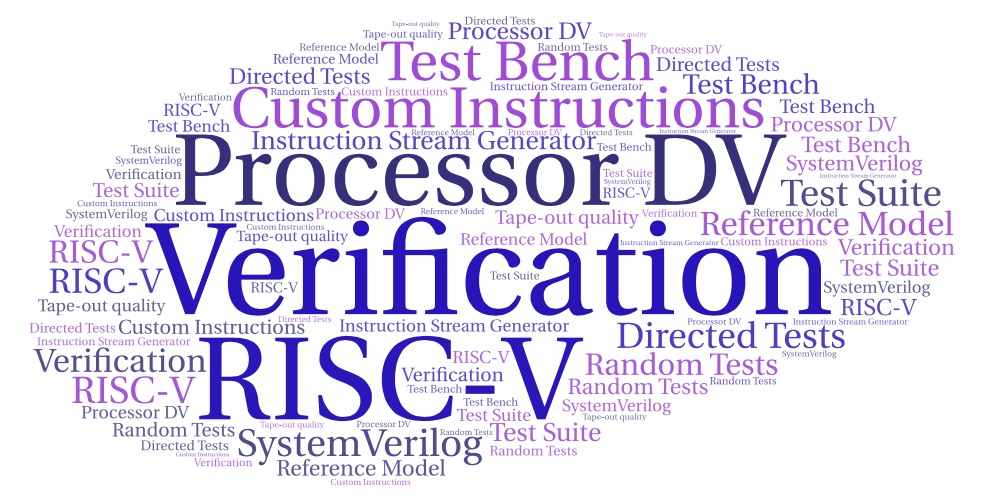Recently Embedded Magazine published a very interesting article with some insights on extending a RISC-V processor with custom instructions
The open instruction set architecture (ISA) of RISC-V permits broad flexibility in implementation and offers optional features that can enable fresh approaches to resolving hardware-software design tradeoffs. Based on a modular structure, a number of standard extensions and options can be used to configure…
Designers must carefully weigh the gains against the costs, many of which are not immediately obvious
While the ability to extend a processor is nothing new, market dynamics are forcing a growing percentage of the industry to consider it a necessary part of their product innovation. From small IoT functions to massive data centers and artificial intelligence, the need to create an optimized processing platform is often the only way to get more…
Design Verification (DV) test planning using a trusted SoC methodology for RISC-V processor verification including custom extension
Given that RISC-V is an open instruction set architecture (ISA), a RISC-V processor designer has many implementation and configuration options, plus the freedom of extending the ISA with custom instructions and extensions. While fundamentally a processor is a hardware design with the main objective of correctly…
When creating a new processor, how much verification is required? Setting the right ROI is important
Custom processors are making a resurgence, spurred on by the early success of the RISC-V ISA and the ecosystem that is rapidly building around it. But this shift is amid questions about whether processor verification has become a lost art.
Years ago custom processors were common. But as the market consolidated around a handful of companies, so did the tools…
Recently there was a very interesting article about how companies are interested in developing their own processors, following the success of RISC-V, but verification is a daunting challenge.
The introduction, and initial success, of the RISC-V processor ISA has reignited interest in the design of custom processors, but the industry is now grappling with how to verify them. The expertise and tools that were once in the market have been consolidated into the hands of the few companies that have been shipping processor chips or IP cores over the past 20 years.
Verification of a processor is…
Recent article in The Register on the impact of RISC-V, a decade on, expanding open ecosystem highlights limits of monolithic approach to CPU design
How well does Intel sleep? It's just rounded off a record year with a record quarter, turning silicon into greenbacks more efficiently than ever, redeeming recent wobbles in the data centre market and missteps in fabrication with double-digit growth.
The company should be slumbering with all the unworried ease of Scrooge…
Recently Kevin McDermott, Imperas VP Marketing, was invited to share some views for the year ahead
The Lost Art of Microprocessor Verification & Virtual Platforms Announce a Comeback Tour
Microprocessors have been a disruptive force within the electronics industry since the 1970’s, bringing compute resources to new levels of devices and breaking barriers as innovation based on the key specification of ISA (…
How close can we get to automated system optimization from a software function? The target keeps moving but the tools keep becoming more capable
Building an optimal implementation of a system using a functional description has been an industry goal for a long time, but it has proven to be much more difficult than it sounds.
The general idea is to take software designed to run on a processor and to improve performance using various types of alternative hardware.…
Tools and methodologies exist, but who will actually do the verification is unclear.
While the promised flexibility of open source could have advantages and possibilities for processors and SoCs, where does the industry stand on verification approaches and methodologies from here? Single-source ISAs of the past relied on general industry verification technologies and methodologies, but open-source ISA-based processor users and adopters will need to review the verification flows of the processor and SoC.
…









